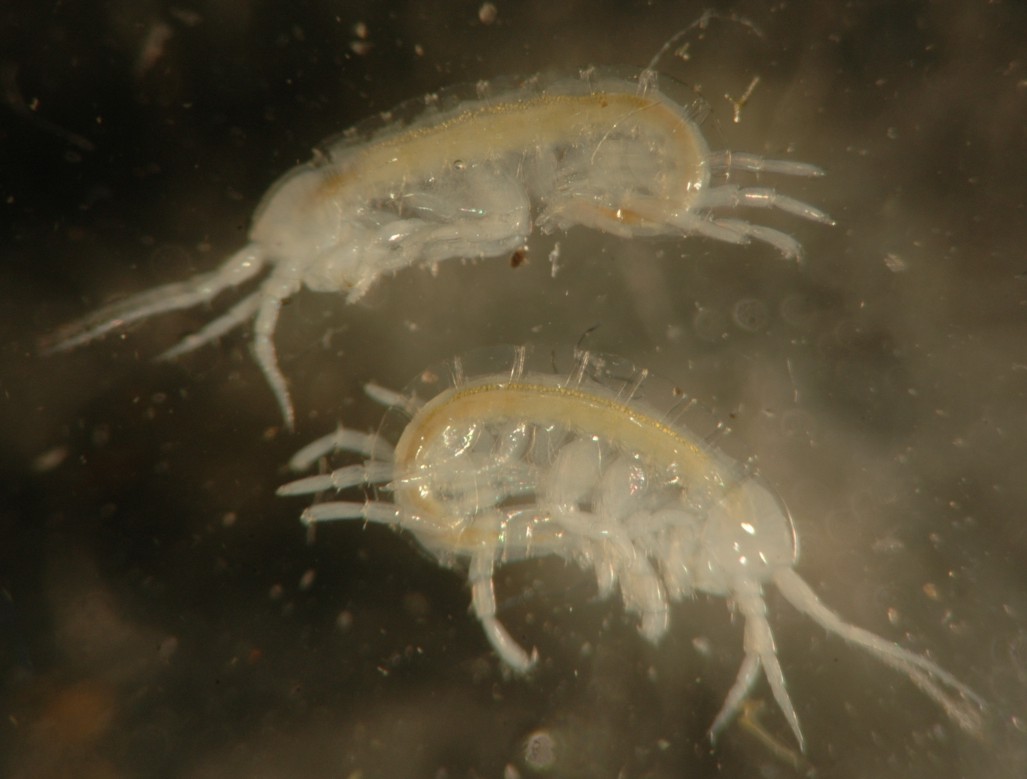Peramphithoe humeralis (Stimpson, 1864)Common name(s): Kelp amphipod |
|
| Synonyms: | 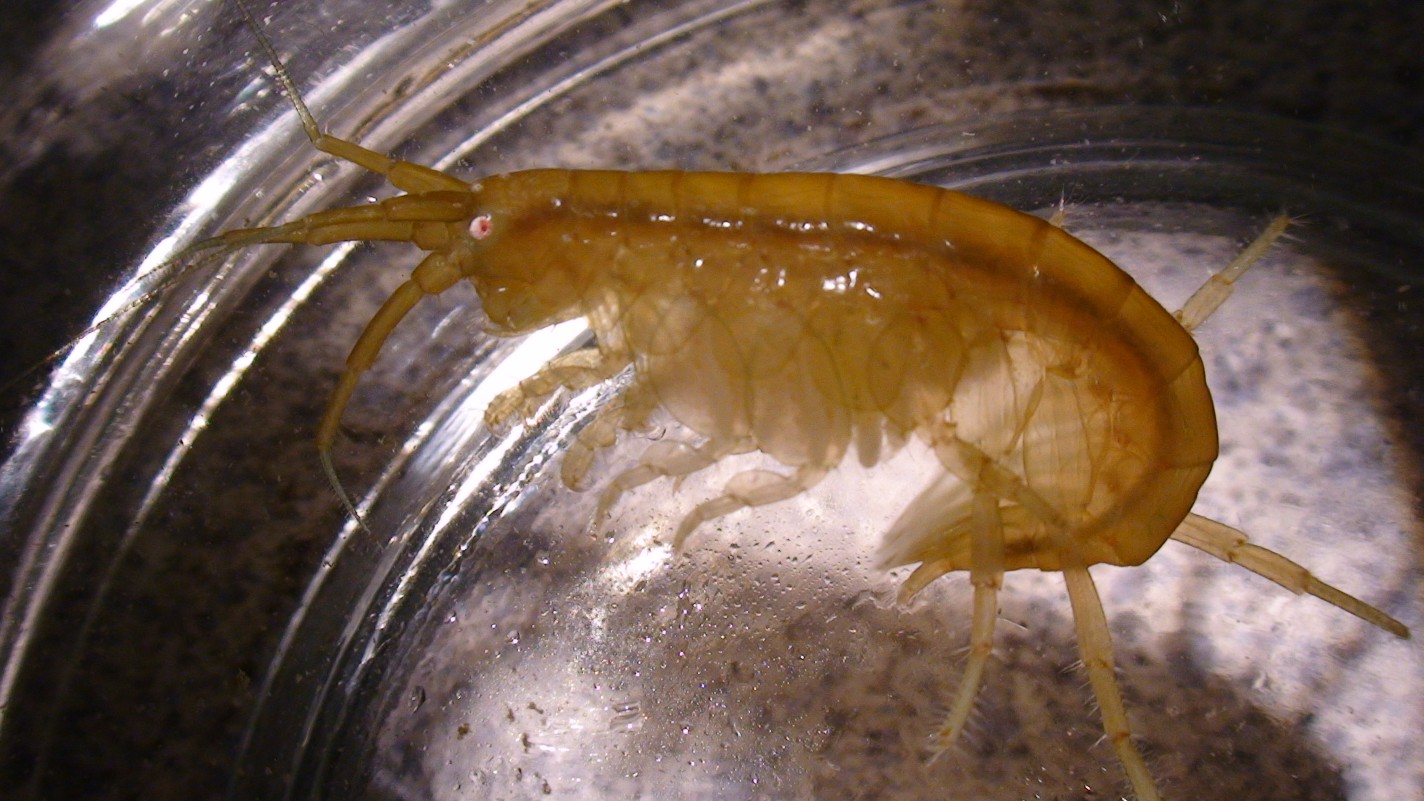 |
|
Phylum Arthropoda
Subphylum Crustacea
Class Malacostraca
Subclass Eumalacostraca
Superorder Peracarida
Order Amphipoda
Superfamily Corophioidea
Family Ampithoidae
|
|
| Peramphithoe humeralis, a large adult female about 3 cm long + antennae. Found in late October under a stone at extreme low tide (-3) at Sares Head. This female is carrying babies between her oostegites. Two babies can be seen peeking out from below her body behind leg 5 (angled forward) and in front of leg 6 (angled backward). | |
| (Photo by: Dave Cowles, October 2007) Identified with the help of Craig Staude | |
How to Distinguish from Similar Species: All Peramphithoe have the peduncular tooth between the two rami of uropod 1. Peramphithoe mea is also large like this species but has articles 5 and 6 on gnathopod 1 of equal length and also has pereopods 6 and 7 of equal length. P. mea is found mostly in Alaska and Russia. Other local Peramphithoe are usually < 1 cm long and the proximal flagellar articles of antenna 2 are fused. Cymadusa uncinata has an accessory flagellum.
Geographical Range:
Depth Range: Low intertidal and subtidal
Habitat: On kelp and seagrass, curls blades to form a tube.
Biology/Natural History: Female amphipods, such as this one, brood their eggs and young on a ventral thoracic brood pouch formed by flaplike inner branches of the legs 3-5 called oostegites. The oostegites can be seen in the photo above as a second set of flaps behind the large flaplike coxae of the legs. This female was carrying at least 11 young in an advanced stage of development.
Peramphithoe
and the closely
related Amphithoe
are common
on kelp and eelgrass.
| Return to: | |||
| Main Page | Alphabetic Index | Systematic Index | Glossary |
References:
Dichotomous Keys:Kozloff 1987, 1996
General References:
Scientific Articles:
Conlan,
K.E., and E.L. Bousfield. 1982. The amphipod superfamily
Corophioidea in
the northeastern Pacific region. Family Ampithoidae:
systematics and
distributional ecology. Publ. Biol. Oceanogr. (Natl. Museums
Canada) No
10, pp.41-75.
Web sites:
General Notes and
Observations: Locations,
abundances, unusual behaviors:
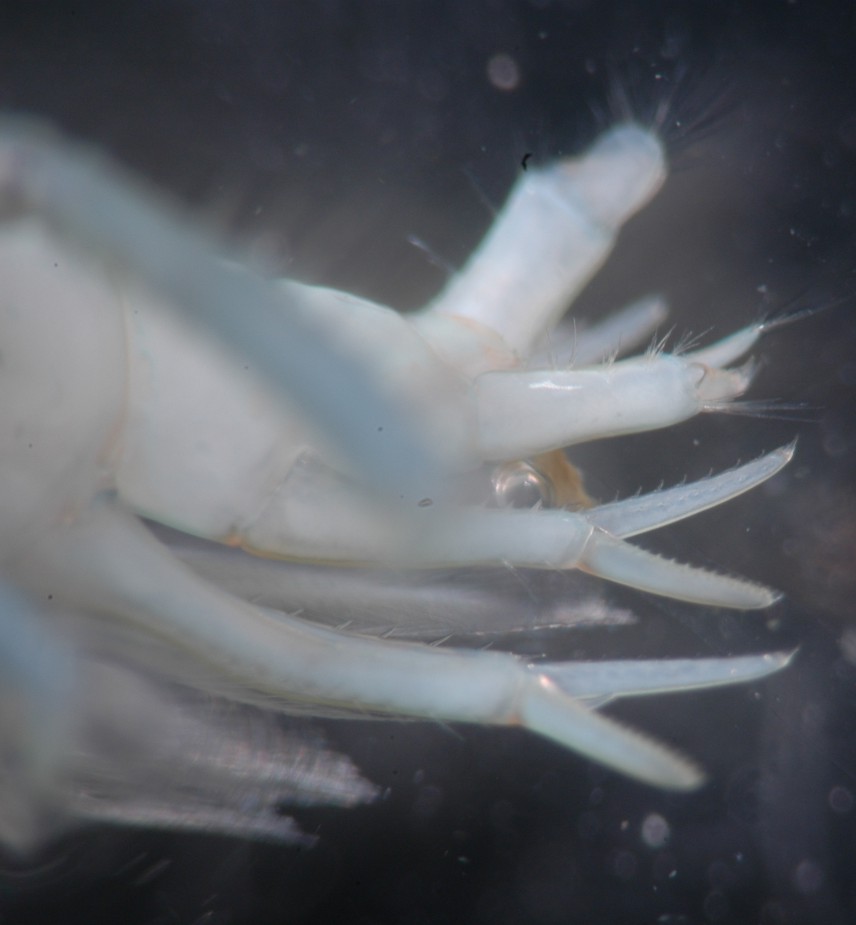
In gammarid amphipods the last three abdominal legs are uropods.
This view shows a dorsal view of uropods
1 (lowest) to 3 on the left side of the animal.
Above the base of uropod
3 the telson
can be seen, then uropod
3 on the right side of the animal is visible at the very top.
Uropods
1 and 2 have two similar rami
composed of flattened blades with setae
along the edges.
Uropod
3 has a paddlelike inner ramus
(seen on edge on the left, close uropod
and from the flat side on the right, far uropod).
The outer ramus
of uropod
3 is less flattened and has two apical
teeth, as seen below.
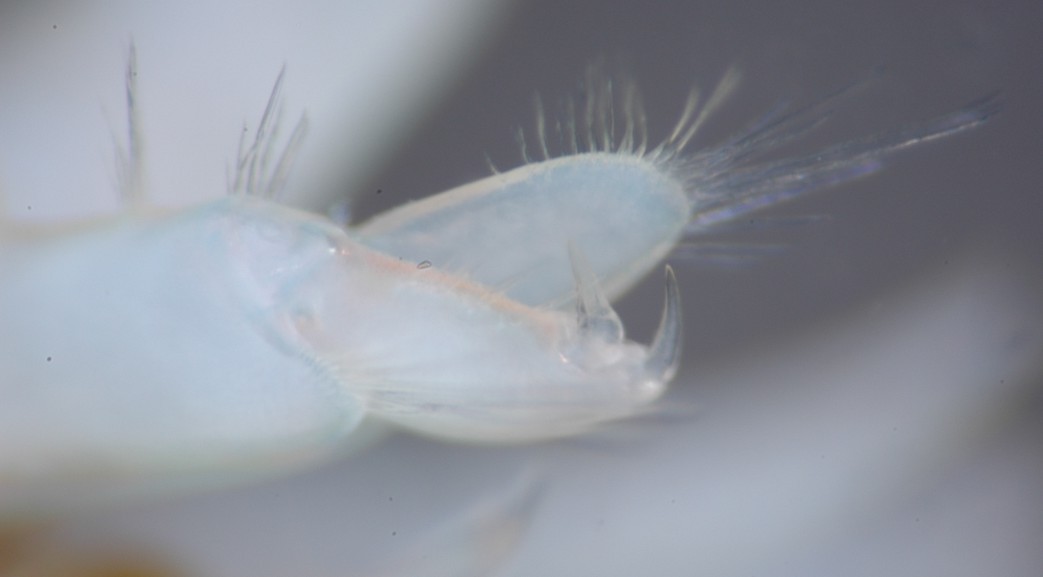
This closeup view of left uropod
3 seen from the dorsal aspect of the left side shows the two apical
teeth on the lateral ramus,
and also shows the paddlelike inner (medial) ramus.
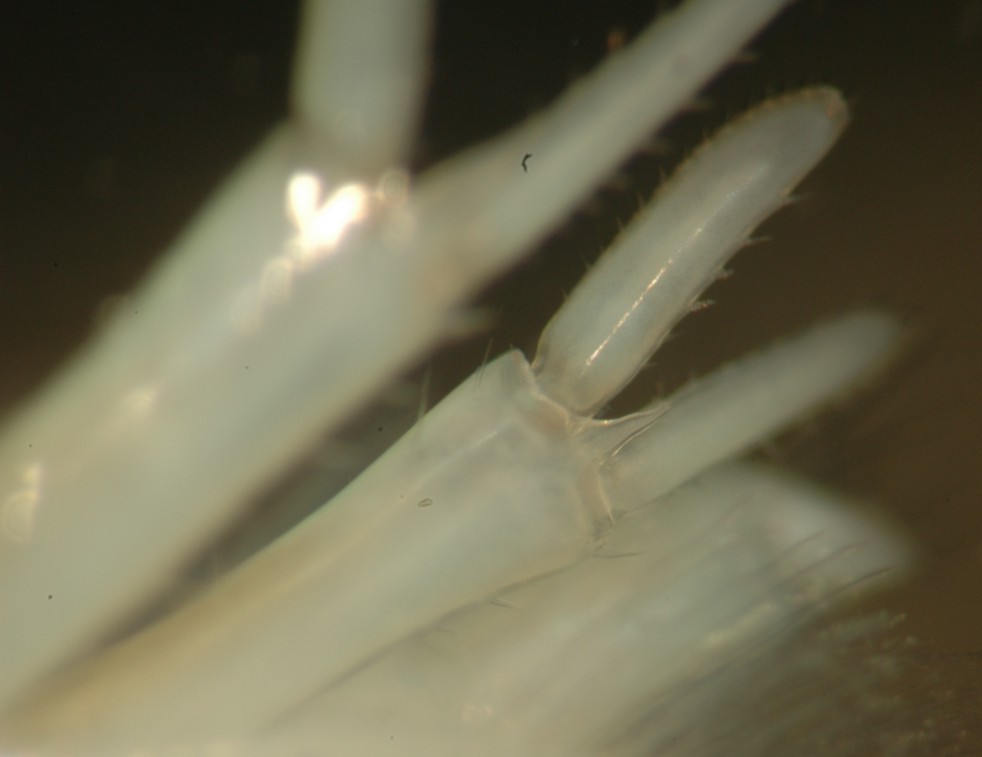
This ventral view of the right uropod
#2 shows the spine which extends from the base (peduncle)
out between the two rami.
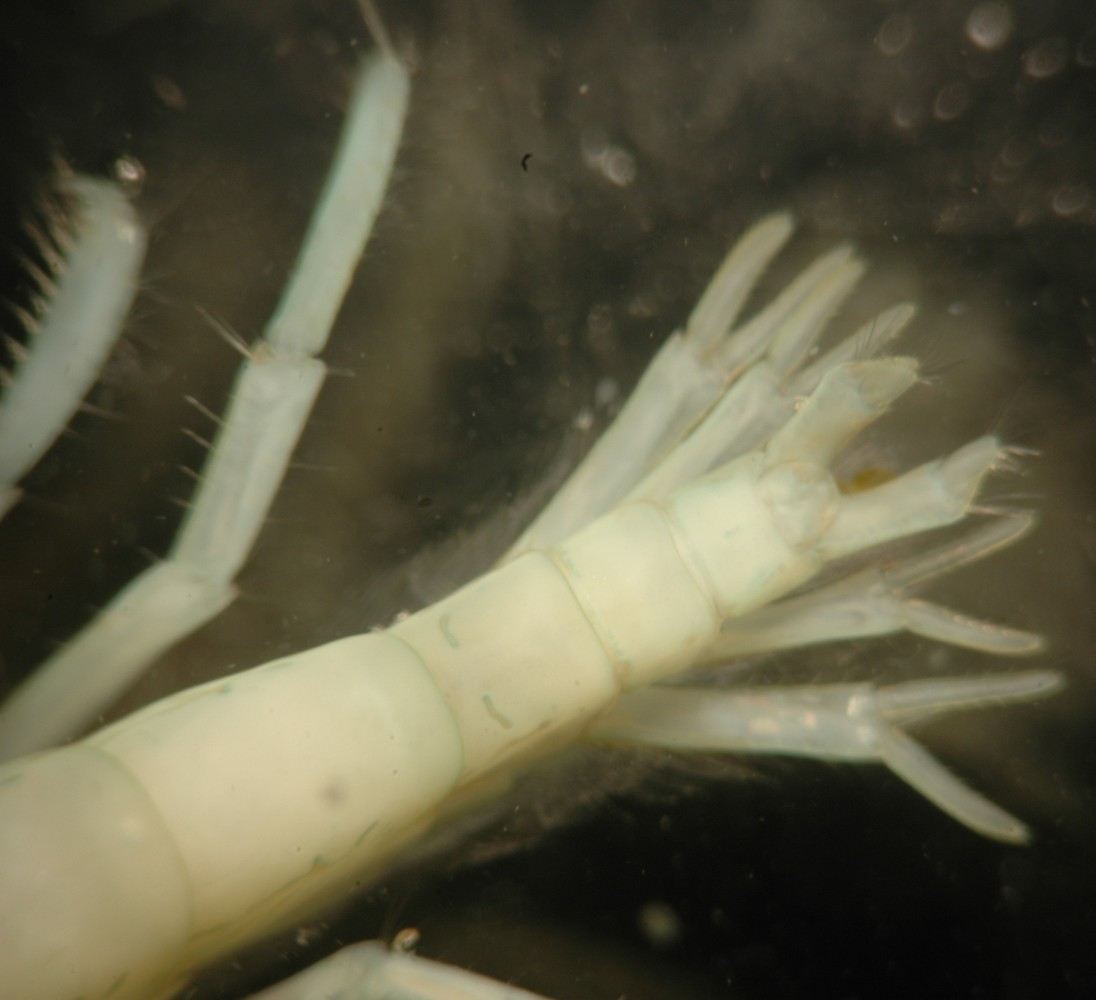
In this dorsal view of the tail all three uropods
plus the telson
can be seen.
Uropod 1 is farthest forward (left), uropod 2 is intermediate, and uropod 3 is next to the telson.
The telson
is short and evenly rounded.

Neither antenna has an accessory
flagellum,
which would be a short branch based beside the main flagellum
(the flagellum
is the flexible, whiplike distal portion of the antennae, with many
short
articles which allow it to bend easily). The articles at the
base
of the flagellum
of the second antenna are not fused together. In this photo
the first
antennae are to the left and the second antennae are to their right,
curled
around the first two pereopod
legs (called gnathopods)
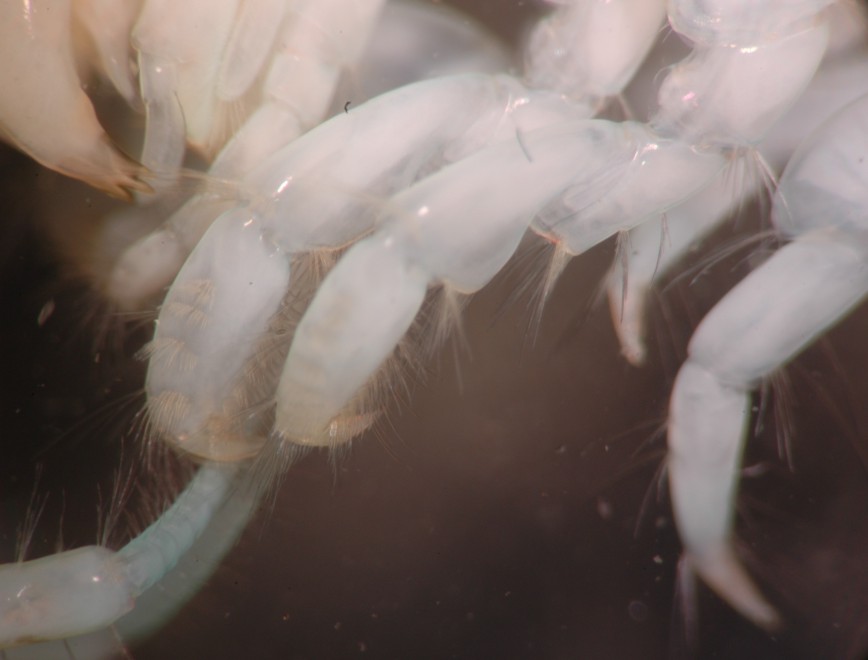
This is a view of the left gnathopods
(#1 is to the left, #2 next to it to the right). Gnathopods
have 7 segments, the last two of which form a (usually subchelate)
claw.
In this view the 7th segment (the movable tip of the claw) is folding
away from the view plane. Segment 5 of gnathopod 1 is longer
than segment 6.
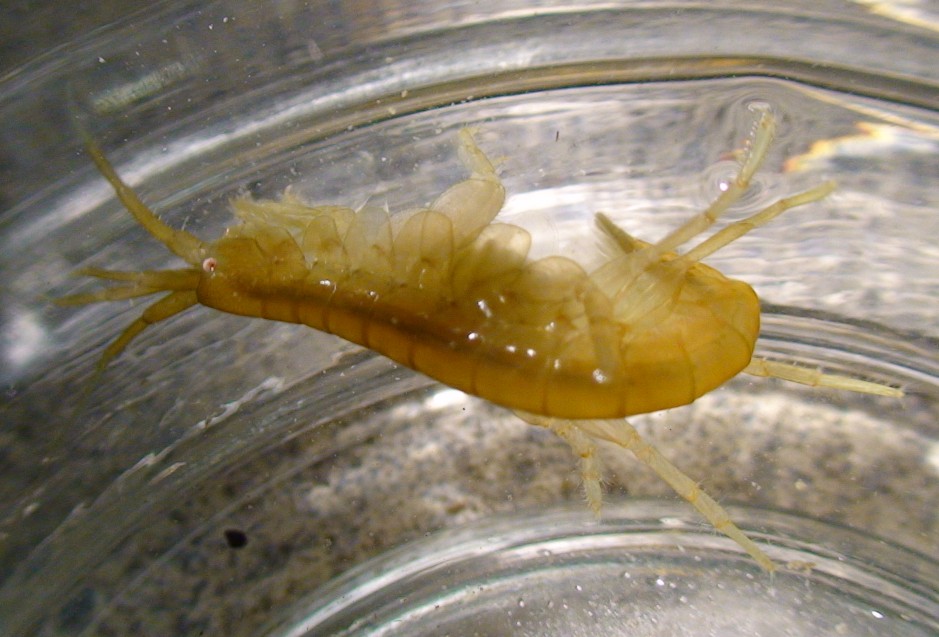
In this view it can be seen that the last two pereopods
(walking legs), # 6 and 7, are of similar length, but #7 is slightly
longer.
A live video of this individual can be viewed here.
This female was carrying at least 11 larvae in her oostegite
brood bpouch, Two of the larvae are shown
above. They
are about 3 mm long plus the antennae.
The young appeared to be sticking their heads (cephalon) out and
peering
out from the pouch as the mother moved around, so I am guessing they
are
nearing the time when they can safely leave the mother.
Authors and Editors of Page:
Dave Cowles (2007): Created original page
CSS coding for page developed by Jonathan Cowles (2007)
